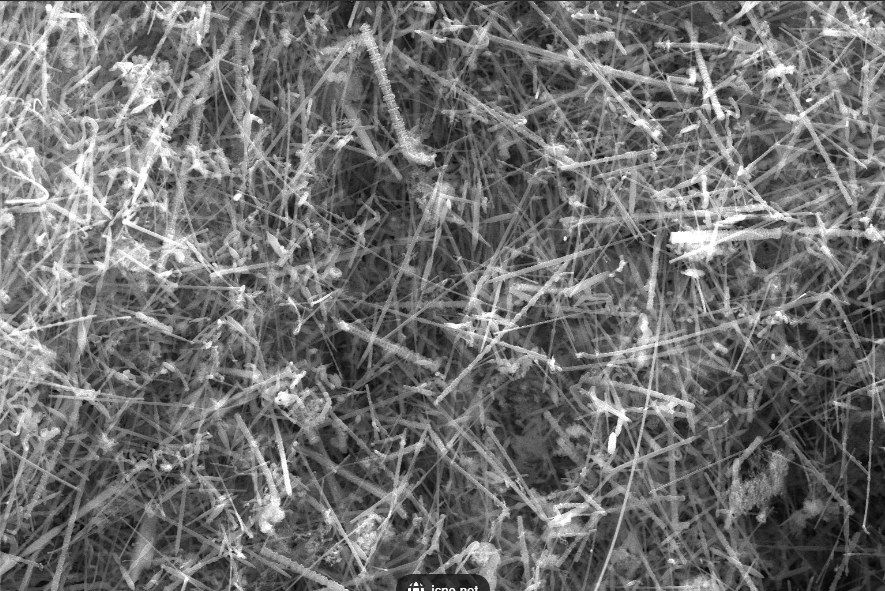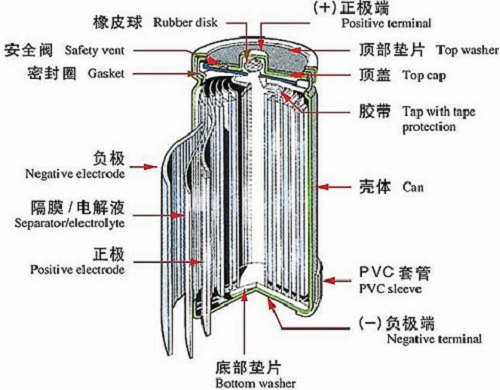
创新背景
锂电池应用于多学科研究和社会领域,覆盖范围极光。采用新技术提高锂电池能量密度近年来一直是锂电池行业的重要竞争。电池能量密度指储存同样电量的所需电池重量或体积。提高锂电池能量密度,意味着应用电池的各行业产品续航能力时间越长,可用性越高。
创新过程
锂离子动力电池结构组成包括负极,隔膜,正极,正极端,极耳,电解液,绝缘片,外壳等。提高能量密度也就是提高正负极材料中的锂原子量。以往使用的负极材料是以石墨为主碳负极材料,如果使用硅基材料,储锂能力可以达到原有碳基的10倍。但是,硅在充电过程中会吸收电池中带正电的锂原子,进行膨胀和收缩循环,无法保持正常运转,造成粉碎,降低电池性能。
斯坦福材料科学与工程系助理教授崔屹2007年在Nature Nanotechnology上发表关于硅纳米线技术在锂电池中的应用的论文《使用硅纳米线的高性能锂电池负极》。在一年后与人合作开创Amprius公司。2022年初,Amprius宣布采用硅纳米技术开发并生产了第一批超高能量密度的锂电池。此批电池能量密度达到450Wh/kg,比目前最先进的特斯拉Model 3电池高出73%,体积减少37%,达到目前可用动力锂电池的最高能量密度。

硅纳米线是新型一维半导体纳米材料,10纳米左右宽、长度无限制,厚度约为一张纸的1/1000。Amprius使用“核-壳”结构硅碳负极,在电池极片上直接生长硅纳米线,使硅吸收锂原子后膨胀,达到正常体积的四倍。但纳米技术使材料结构合理释放应力,避免了硅的粉碎,实现电池最高能量密度。
Amprius表示,硅是能量密度最好的材料,如果利用硅纳米线技术100%使用硅材料,有望实现最高能量密度的锂离子电池。
创新关键点
采用硅纳米线技术更换锂电池负极材料以提高电池性能。
Silicon nanowire technology can greatly improve the energy density of lithium batteries
The structural composition of lithium-ion power battery includes negative electrode, separator, positive electrode, positive terminal, electrode lug, electrolyte, insulating sheet, shell, etc. To increase the energy density is to increase the amount of lithium atoms in the positive and negative electrode materials. The negative electrode material used in the past is mainly graphite carbon negative electrode material. If silicon-based material is used, the lithium storage capacity can reach 10 times that of the original carbon-based material. However, silicon absorbs positively charged lithium atoms in the battery during the charging process, undergoes expansion and contraction cycles, and cannot maintain normal operation, causing pulverization and reducing battery performance.
Cui Yi, Assistant Professor of the Department of Materials Science and Engineering at Stanford, published a paper on the application of silicon nanowire technology in lithium batteries in Nature Nanotechnology in 2007 "High-performance lithium battery anode using silicon nanowires".
Co-founded Amprius a year later. In early 2022, Amprius announced the development and production of the first ultra-high energy density lithium batteries using silicon nanotechnology. The energy density of this batch of batteries reaches 450Wh/kg, which is 73% higher than the current most advanced Tesla Model 3 batteries, and the volume is reduced by 37%, reaching the highest energy density of currently available power lithium batteries.
Silicon nanowires are a new type of one-dimensional semiconductor nanomaterials with a width of about 10 nanometers, unlimited length, and a thickness of about 1/1000 of a sheet of paper. Amprius uses a "core-shell" structure silicon carbon negative electrode to grow silicon nanowires directly on the battery pole pieces, so that the silicon absorbs lithium atoms and expands to four times the normal volume. However, nanotechnology makes the material structure reasonably release stress, avoids the crushing of silicon, and achieves the highest energy density of the battery.
Amprius said that silicon is the material with the best energy density, and if 100% silicon is used in silicon nanowire technology, it is expected to achieve the highest energy density of lithium-ion batteries.
智能推荐
智能制造 | 纳米级精度打印纳米金刚石
2022-06-30通过程序控制的先进打印技术,实现了在任意基底上对含有NV色心的纳米金刚石颗粒的高精度位置操控。该技术将为制造量子讯息处理器和生物传感器等量子器件,开拓出一条实用且具经济效益的出路。
涉及学科涉及领域研究方向内科学创新 | 纳米粒子修饰的微型机器人可体内输送抗生素治疗急性细菌性肺炎
2022-11-11加州大学圣地亚哥分校的纳米工程师开发了微型机器人,称为微型机器人,可以在肺部游来游去,输送药物并用于清除危及生命的细菌性肺炎病例。
涉及学科涉及领域研究方向前沿医学 | 利用超软电极监测心肌细胞电信号
2022-06-29在纳米网络上采用高可控性的静电纺丝技术,监测心肌细胞化学物理信息同时保证细胞自主无影响运动。
涉及学科涉及领域研究方向临床医学创新 | 开发“纳米颗粒”可帮助医疗人员准确识别头颈部癌症
2022-09-27杜克大学(Duke University)的研究人员开发了一种名为“Nanorattles”的独特纳米粒子,新的纳米颗粒形状可以同时大大增强来自多个独立生物标志物的信号,无需活检即可准确检测头颈部癌症,以改善全球健康。
涉及学科涉及领域研究方向